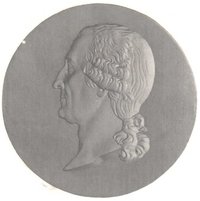Jacques de Vaucanson
|
|
Jacques de Vaucanson (February 24,1709-November 21,1782) was a French engineer and inventor who is credited with creating the world's first true robots, as well as for creating the first completely automated loom.
| Contents |
Early life
He was born in Grenoble, France in 1709 as Jacques Vaucanson (the particle "de" was later added to his name by the Académie des Sciences [1] (http://www.chez.com/soie/vaucans.htm)). The son of a glove-maker, he grew up poor, and in his youth he reportedly aspired to become a clockmaker [2] (http://perso.wanadoo.fr/moto.histo/Ev_G/vaucanson.htm). He studied under the Jesuits and later joined the Order of the Minims in Lyon. It was his intention at the time to follow a course of religious studies, but he regained his interest in mechanical devices after meeting the surgeon Le Cat, from whom he would learn the details of anatomy. This new knowledge allowed him to develop his first mechanical devices that mimicked biological vital functions such as circulation, respiration, and digestion [3] (http://www.automates.info/bibliotheque/articles/vaucanson.htm).
Career as Inventor of Automatons
In 1737, he built his first automaton, The Flute Player, a life-size figure of a shepherd that played the tabor and the pipe and had a repertoire of twelve songs. The following year, in early 1738, he presented his creation to the Académie des Sciences [4] (http://www.swarthmore.edu/Humanities/pschmid1/essays/pynchon/vaucanson.html). At the time, mechanical creatures were somewhat a fad in Europe, but most could be classified as toys, and de Vaucanson's creations were recognized as being revolutionary in their mechanical life-like sophistication.
Later that year, he created two additional automatons, The Tambourine Player and The Duck, which is considered his masterpiece. The duck had over 400 moving parts, and could flap its wings, drink water, digest grain,and defecate [5] (http://www.swarthmore.edu/Humanities/pschmid1/essays/pynchon/vaucanson.html). He is credited as having invented the world's first flexible rubber tube while in the process of building the duck's intestines. Despite the revolutionary nature of his automatons, he is said to have tired quickly of his creations and sold them in 1743.
His inventions brought him to the attention of Frederick II of Prussia, who sought to bring him to his court. Vaucanson refused, however, wishing to serve his own country [6] (http://www.chez.com/soie/vaucans.htm)
Appointment to French Government
In 1741 he was appointed by Cardinal Fleury, chief minister of Louis XV, as inspector of the manufacture of silk in France. He was charged with undertaking reforms of the silk manufacturing process. At the time, the French weaving industry had fallen behind that of England and Scotland. Vaucanson promoted wide-ranging changes for automation of the weaving process. In 1745, he created the world's first completely automated loom.
[7] (http://www.alyon.org/generale/histoire/france/chronologie/03_chronologie_ancien_regime.html). Vaucanson was busy automating the French textile industry with punch cards- a technology that, as refined by Joseph-Marie Jacquard more than a half century later, would revolutionize weaving and, in the twentieth century, would be used to input data into computers and store information in binary form. His proposals were not well received by weavers, however, and many of the more revolutionary ones were largely ignored.
He invented several machine tools, such as the first fully documented, all metal slide rest lathe, around 1751. It was described in the Encyclopédie.
In 1746, he was made a member of the Académie des Sciences[8] (http://www.vaucanson.org/lettres/divers/bio_vaucanson.htm).
Legacy
He died in Paris in 1782. Vaucanson left a collection of his work as a bequest to Louis XVI. The collection would become the foundation of the Conservatoire des Arts et Métiers in Paris. His original automatons have all been lost. The flute player and the tambourine player were reportedly destroyed in the Revolution. His proposals for the automation of the weaving process, although ignored during his lifetime, were later perfected and implemented by Joseph Marie Jacquard, the creator of the Jacquard loom.
See also
References
- Swarthmore College site (http://www.swarthmore.edu/Humanities/pschmid1/essays/pynchon/vaucanson.html)
- Jacques de Vaucanson (http://www.miralab.unige.ch/subpages/automates/eightennth/vaucanson_uk.htm)
- Biography at Vaucanson.org (fr) (http://www.vaucanson.org/lettres/divers/bio_vaucanson.htm)
- Biography at Automates.info (fr) (http://www.automates.info/bibliotheque/articles/vaucanson.htm)Vaucanson, Jacques de
Vaucanson, Jacques de Vaucanson, Jacques de pl:Jacques de Vaucanson

